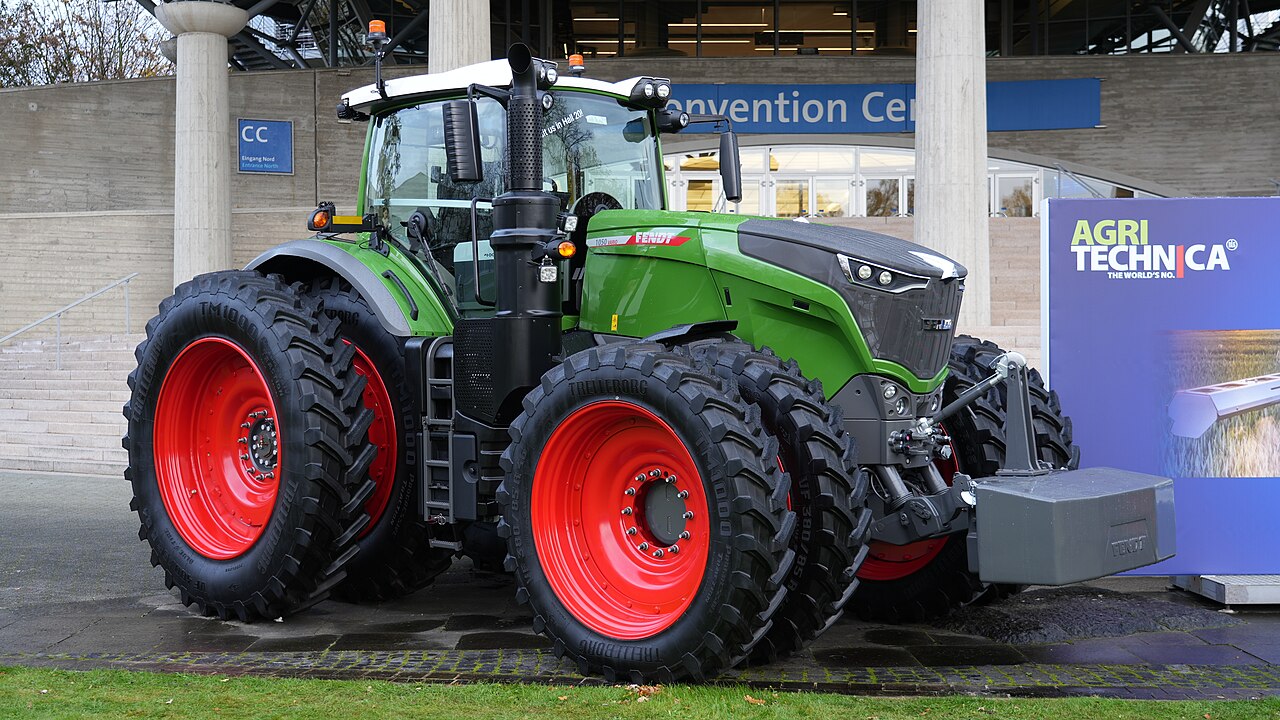Across the world of modern farm machinery, few brands are moving faster toward the future than Fendt. As part of AGCO Corporation, the company is investing heavily in electric power, automation, precision planting, and advanced harvesting systems. These innovations are not just about new gadgets. They are about giving farmers real tools that make their work more efficient, autonomous, and connected.
1. Harvesting Made Smarter
One of Fendt’s biggest recent initiatives is the 2025 Fendt Harvest Tour, which brought the flagship IDEAL 8T combine to farms across the Midwest. The event served as both a showcase and a listening tour, giving Fendt engineers a chance to hear directly from farmers in the field.
The IDEAL 8T stands out with a 485-bushel grain tank that unloads in only 81 seconds, allowing harvest crews to move quickly during narrow weather windows. Its IDEALdrive joystick steering system replaces the traditional steering wheel, improving visibility and reducing operator fatigue. The IDEALharvest automation system also fine-tunes combine settings in real time to maintain grain quality and optimize performance.
All of this fits within Fendt’s “Farmer First” approach, which puts practical benefits ahead of flashy marketing. The result is equipment that can handle long harvest days, respond to changing crop conditions, and help operators cover more acres with fewer interruptions.
2. Precision Planting with the Momentum Planter
Fendt’s commitment to technology extends well beyond harvesting. The company’s Momentum series planters are changing how farmers approach planting in both corn and canola. The 30-foot Momentum planter now includes a dry fertilizer option, offering flexibility and improved efficiency for corn growers. Its Load Logic weight management system automatically balances the planter across uneven ground, minimizing compaction and improving seed depth accuracy.
For Canadian canola producers, field trials have shown even greater advantages. A 48-row Momentum planter with 15-inch spacing cut seed costs by as much as 40 percent compared to traditional air drills. The design’s in-line tandem wheels eliminate pinch rows, promoting uniform seed emergence and stronger stands. Every one of these features points to a common goal: improving yield while reducing input costs.
3. Autonomy and Retrofit Solutions
Fendt is also proving that autonomy does not have to mean replacing existing equipment. A large farm in the Netherlands demonstrated how a Fendt 516 tractor, retrofitted with an iQuus autonomous system, could operate with minimal supervision. While one crew focused on harvesting potatoes, the autonomous tractor handled subsoiling duties in another part of the field.
The setup allowed two major operations to take place at once, using the same staff. With rising labor costs and shorter work windows, automation like this is becoming more attractive. Fendt’s retrofit strategy makes it realistic for farms to adopt autonomy without starting from scratch. By updating existing tractors with guidance systems, sensors, and safety controls, operations can increase productivity and get more done in less time.
4. Electric, AI, and Next-Generation Technologies
At Agritechnica 2025, Fendt revealed a look at its future through a combination of electric, AI-based, and autonomous systems. The Fendt e100 Vario electric tractor was one of the show’s highlights, featuring zero-emission operation and quiet performance. It can be paired with a front-mounted battery range extender and a precision seed drill on the rear. The tractor also uses a vision-based guidance system that detects rows and lanes without relying on satellite signals, offering reliable performance even where GPS coverage is limited.
Another major development was the Fendt 800 Vario equipped with the OutRun retrofit kit, built in partnership with Trimble. The system allows for fully autonomous operation, handling tasks such as grain cart work or post-harvest tillage. Fendt also introduced the RowPilot AI system, which uses cameras to detect crop rows and automatically corrects for drift when working on slopes or in crosswinds.
Together, these innovations form the backbone of Fendt’s “Road to Autonomy” vision. The company is combining electric power, artificial intelligence, and precision automation into a single ecosystem that supports smarter, cleaner, and more efficient farming.
What It Means for Farmers
For farmers, the takeaway is clear. Fendt’s new technologies are designed to make every stage of farming more efficient and precise. The IDEAL combines reduce downtime during harvest. The Momentum planters lower seed and fertilizer costs. Autonomous retrofits help manage labor shortages, while electric and AI-driven machines open the door to sustainable growth and long-term savings.
These technologies also provide flexibility for the future. Investing in equipment that can be upgraded or adapted for autonomy and alternative power keeps operations ahead of the curve. While some innovations, like full electric tractors, are still early in development, others are already proving their value in the field.
Final Thoughts
Fendt’s innovation pipeline is stronger than ever. From its harvest demonstrations in the United States to precision planting breakthroughs in Canada and autonomous projects in Europe, the company is setting new standards for agricultural equipment. Its presentation at Agritechnica shows that the future of farming is closer than many realize.
For farmers, these technologies offer real opportunities to work smarter and prepare for what’s ahead. Whether it’s cutting costs, saving time, or improving efficiency, Fendt is helping shape the path forward for modern agriculture. The future is not something Fendt is waiting for. It is something the company is building right now.


Leave a Reply